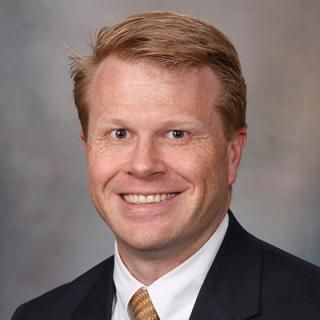News
Article
Physicians Who Take Vacation Time, Avoid Working on Vacation Less Likely to Suffer Burnout
Author(s):
A survey of more than 3000 US physicians is shedding light on the impact of taking vacation time and avoiding physician-related work on vacation can have on burnout and achieving professional fulfillment.
Tait Shanafelt, MD
Credit: The Ohio State University

Looking to avoid physician burnout? A new study suggests taking vacation time and avoiding work while on vacation could be a good place to start.
Results of the cross-sectional survey, which included more than 3000 US physicians, suggest more than 50% were taking 15 or fewer vacation days per year, with 1 in 5 taking 5 or fewer, and 70% reporting performing work on the typical vacation day. Analysis of how these factors play into burnout and professional fulfillment revealed time spent working on vacation and having EHR inbox coverage as factors associated with change in these areas.1
“To our knowledge, this cross-sectional study is the first large study of vacation behaviors among US physicians and the first to evaluate associations of vacation behaviors with burnout,” wrote investigators.
A quiet crisis found across most fields of healthcare, physician burnout represents one of the greatest threats to disrupt public health systems, particularly among US physicians. According to a 2023 survey from the Massachusetts Medical Society, 55% of respondents experienced symptoms reaching the threshold for burnout and 27% of physicians indicated they would “definitely” or “likely” be leaving medicine in the next 2 years.
In the current study, a team led by Tait Shanafelt, MD, Stanford University School of Medicine, with colleagues from the American Medical Association (AMA) sought to examine how number of vacation days taken per year and magnitude of physician-related work on vacation might influence prevalence of burnout and professional fulfillment as well as how individual and organizational factors might influence this relationship. With this in mind, investigators designed their study as an analysis of data from a cross-sectional survey of a sample representative of US physicians across all specialties listed in the AMA’s Physician Professional Data.
Conducted from November 20, 2020 to March 23, 2021, a physical or electronic survey invitation was sent to more than 93,000 physicians, including a subgroup who received a vacation subsurvey including items such as vacation days taken per year, inbox coverage on vacation, time spent working on patient care and other professional tasks, and more. A total of 3024 physicians completed at least 1 vacation item on the subsurvey. For the purpose of analysis, burnout was assessed using the Maslach Burnout Inventory and the Stanford Professional Fulfillment Index was used to measure professional fulfillment.
The cohort of survey respondents was 62.0% male, 83.7% were married, 25.7% were 35-44 years of age, 24.6% were 45-54 years of age, 27.1% were 55-64 years of age, and 18.4% were 65 years or older. When examining their professional characteristics, 55.7% worked in private practice, 28.5% worked in an academic medical center, and 34.6% reported working 60 hours or more per week. The greatest representation by specialty was observed for internal medicine (10.0%) followed by psychiatry (8.6%), and surgery (8.0%). In contrast, the least represented specialties among the group were preventative or occupational medicine (0.3%), otolaryngology (0.6%), and urology (0.7%).
Investigators highlighted more than one-third of respondents identified finding someone to cover clinical responsibilities, the financial impact of taking vacation, and the volume of EHR inbox work to face on return to work as barriers to taking action. In multivariable analysis adjusted for personal and professional factors, concern about finding someone to cover clinical responsibilities (odds ratio [OR], 0.48 [95% CI, 0.35-0.65] for quite a bit; OR, 0.30 [95% CI, 0.21-0.43] for very much) and financial concerns (OR, 0.49; 95% CI, 0.36-0.66 for quite a bit; OR, 0.38; 95% CI, 0.27-0.54 for very much) were associated with decreased likelihood of taking more than 3 weeks of vacation per year
When assessing how these factors might influence risk of burnout, results indicated taking more than 3 weeks of vacation per year (OR, 0.66; 95% CI, 0.45-0.98] for 16-20 days; OR, 0.59; 95% CI, 0.40-0.86 for >20 days vs none) and having full EHR inbox coverage while on vacation (OR, 0.74; 95% CI, 0.63-0.88) were associated with reduced risk of burnout among physicians. In contrast, spending 30 minutes or more on work-related tasks on a typical vacation day was associated with higher risk of burnout:
- For 30-60 minutes: OR, 1.58; 95% CI, 1.22-2.04
- For 60-90 minutes: OR, 1.97; 95% CI, 1.41-2.77
- More than 90 minutes: OR, 1.92; 95% CI, 1.36-2.73
Investigators pointed out multivariable analysis of factors associated with professional fulfillment suggest full EHR inbox coverage while on vacation was associated with increased likelihood of professional fulfillment (OR, 1.32; 95% CI, 1.13-1.56).
“Occupational burnout among physicians is a serious threat to patient and physician well-being and health system goals and has been associated with higher rates of medical errors, longer hospital stays, greater mortality, lower rates of patient satisfaction, reduction in work hours, turnover, excess health care costs, and physical and mental health issues for physicians,” investigators noted. “The fact that two-thirds of physicians are obligated to continue to provide clinical care to their patients while on vacation should be considered a marker of poorly designed systems of teamwork, inadequate clinical staffing, and poorly designed cross-coverage systems.”
References:
- Sinsky CA, Trockel MT, Dyrbye LN, et al. Vacation Days Taken, Work During Vacation, and Burnout Among US Physicians. JAMA Netw Open. 2024;7(1):e2351635. doi:10.1001/jamanetworkopen.2023.51635
- Massachusetts Medical Society survey raises concern about stability of state’s physician workforce. Massachusetts Medical Society: Massachusetts Medical Society survey raises concern about stability of state’s physician workforce. March 2, 2023. Accessed January 12, 2024. https://www.massmed.org/News/Press-Releases/Massachusetts-Medical-Society-survey-raises-concern-about-stability-of-state-s-physician-workforce/.




